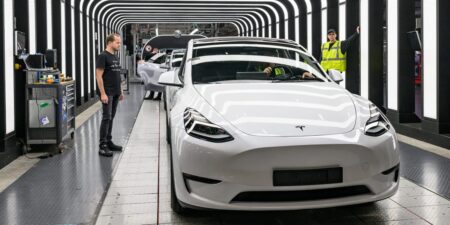The ever increasing number of data centers and an accelerated adoption of artificial intelligence (AI) may cause subtle shifts in global energy systems as we enter the latter half of the current decade.
Before the mass proliferation of AI tools, computational needs of end users were largely serviced by data centers with power demand in region of 5MW. However, all that is rapidly changing with more and more ‘hyperscale’ or large data centers becoming commonplace.
These have typical power demands of over 100MW or more, with an annual electricity consumption equivalent to the electricity demand from around 350,000 to 400,000 electric cars, according to the International Energy Agency (IEA).
That’s because a single ChatGPT query requires 2.9Wh of electricity, compared with 0.3Wh for a routine Google search; nearly 10 times as much.
It is why many forecasters believe the world will see a significant scaling up of hyperscale data centers driven by the use of AI for everyday computing. For instance, Goldman Sachs estimates the overall increase in data center power consumption from AI to be on the order of 200TWh per year between 2023 and 2030.
Much of the hyperscale data center fleet expansion is concentrated in the U.S., where the IEA believes construction has doubled in the past two years alone. Other major economies, such as China and the European Union, are also witnessing an increase in activity.
And in 2023, overall capital investment by Silicon Valley leaders in AI and data center installation – Google, Microsoft and Amazon – was higher than that of the entire U.S. oil and gas industry totaling around 0.5% of U.S. GDP.
An Altered Trajectory Of Global Power Demand
This acceleration of AI and data centers will “fundamentally alter” the trajectory of global power demand, according to S&P Global Commodity Insights. The research outfit currently expects power demand for data centers to grow between 10% and 15% per year between now and 2030.
It also notes that data centers could very well account for up to 5% of total global power demand by 2030. In the developed economies of North America, Europe, and Asia, where power demand has been flat or has even fallen in recent years, data centers represent a shift to 2% to 3% growth.
In developing economies, incremental data center demand will add to already robust electricity demand growth. In both cases, this enhanced level of growth offers challenges to electricity grids as new data center projects take, on average, two to three years from inception to commercial launch, while new power supply can take four to five years or more and transmission projects even longer.
Of course, large technology companies have led the way in terms of clean energy procurement to feed their data centers. Many have inked long-term power purchase agreements with utilities and suppliers, with contracts underpinned by renewable energy sources such as wind and solar power.
However, S&P Global Commodity Insights notes that oftentimes this siphons clean power away from the grid at large. The domino effect may be a blow for carbon emissions reduction as a likely surge in demand may require additional gas-fired power generation capacity to be built.
Or even perhaps keeping aging coal-fired generation capacity online longer than originally planned. That’s not the sort of transformation of energy systems many had imagined for the turn of this decade.
Read the full article here
















